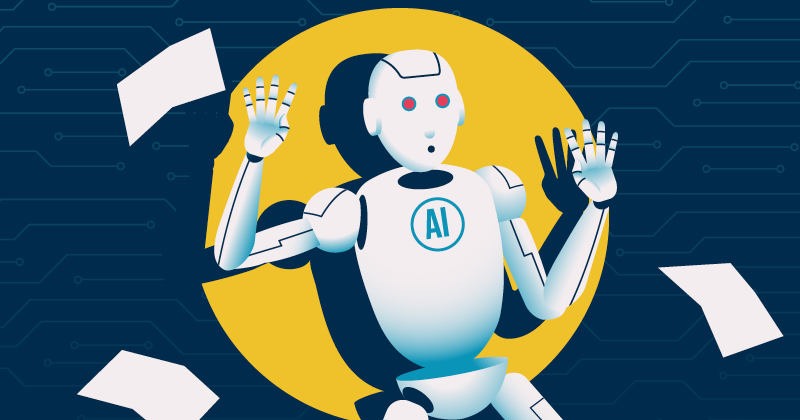July is typically the time for many of us in the education and skills space where we process results and focus on getting our learners and apprentices to their next destination, whether that’s within education or employment.
For many of us AI has begun to deliver efficiencies within our processes and also challenges with plagiarism (although that’s always been an issue) and the sharing of live examination questions and answers in real time. However, it’s also a time to reflect and look at how we might do things differently – and why.
As the UK positions itself as a global leader in artificial intelligence, the further education (FE) sector finds itself at a pivotal crossroads. The government’s AI Opportunities Action Plan, published earlier this year and the industrial strategy outlined a bold vision: to embed AI across public services, boost economic growth, and transform how people learn and work. But what does this mean for vocational education, and how can FE providers rise to the challenge?
AI is no longer a futuristic concept. It’s a present-day disruptor in a long line of disruption. For many years, the use of a ball point pen was frowned upon. From adaptive learning platforms to automated assessments, AI is reshaping how learners and apprentices engage with content; and how awarding organisations design it and educators deliver it. For vocational learners and apprentices, this gives us all the chance to open up new possibilities.
Can we create personalised learning pathways tailored to individual strengths and career goals and give them the ability to learn in a way that best enables them to reach their potential? For neurodiverse learners and apprentices this could be a gamechanger.
We’re already seeing the growth of AI-powered simulations for hands-on training in fields like healthcare, engineering, and digital media. We could do so much more to build mathematical skills with the right investment and imagination.
It also gives us the ability to provide real-time feedback and support which benefits educators in looking at their training and approaches and gives meaningful feedback to learners and apprentices, as well as potentially reducing barriers for neurodiverse and disadvantaged learners. It was good to note the industrial strategy backs this transformation with initiatives like TechFirst, a £187 million programme to bring AI and digital skills into classrooms and communities.
Despite the aspiration, the UK faces a significant AI skills shortage. The government has called for expanded education pathways into AI, including through FE and apprenticeships and not just higher education. This shift demands that we upskill all of us involved in designing and delivering education and skills, including employers, to confidently use and teach AI tools. We also need curriculum reform to embed digital literacy and data fluency across subjects. Hopefully this will be reflected within the curriculum and assessment review. Importantly learners and apprentices need to understand when to use AI, the risks involved and the need to interpret the information in a meaningful way – including accepting that it’s not always right (eh Grok!).
We also need to be able to modify qualification content and assessment at a quicker pace than we do currently, ensuring content is up to date and relatable. Stronger employerpartnerships will helpto align training with evolving industry needs, although employers also need investment into understanding AI.
We know the government is investing in training 7.5 million workers in AI skills by 2030 through industry partnerships, expanding apprenticeships and modular learning, including skills bootcamps and higher technical qualifications and creating AI growth zones and regional adoption hubs to support local innovation. But AI must not widen existing inequalities. As FE institutions embrace tech-driven learning, they must also champion inclusive design, mental health support and flexible access. Micro-credentials, hybrid models and modular qualifications can help learners of all ages and backgrounds thrive. It’s important that the industrial strategy’s lifelong learning entitlement, launching in 2027, will help people upskill and retrain throughout their careers with the right support and guidance.
However, that’s two years away. The FE sector has a unique opportunity to lead the UK’s AI revolution – not just by teaching technical skills, but by reframing education itself. That means looking to embed green and digitalskills into every vocational pathway. We need to look more at supporting dual professionalism, where educators combine industry expertise with pedagogical excellence. And we need to drive policy innovation, especially around funding, qualifications, and workforce development.
As we look ahead to the next academic year and beyond, the question isn’t whether AI will transform FE but how boldly we choose to shape that transformation.














Your thoughts